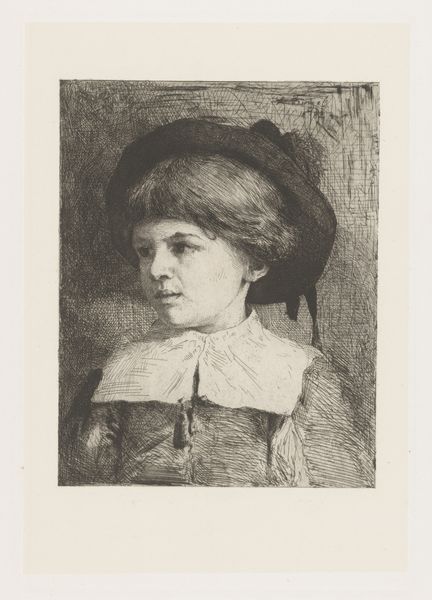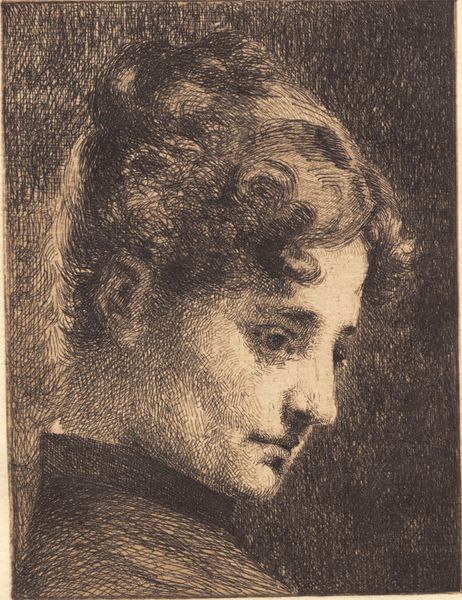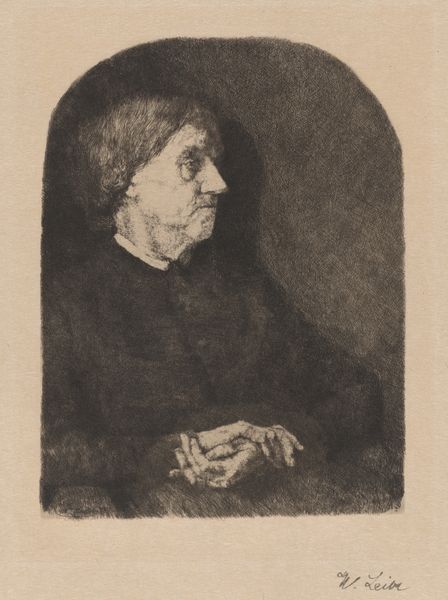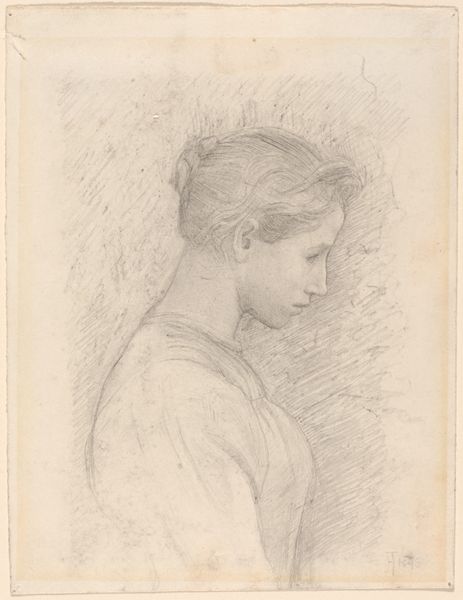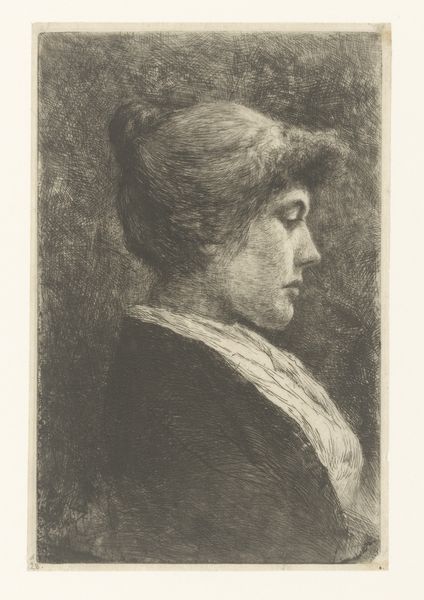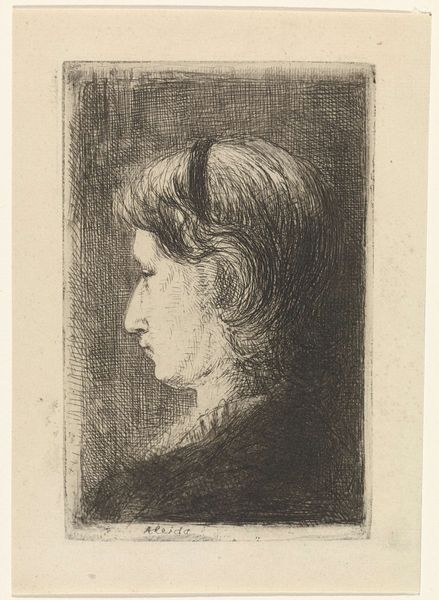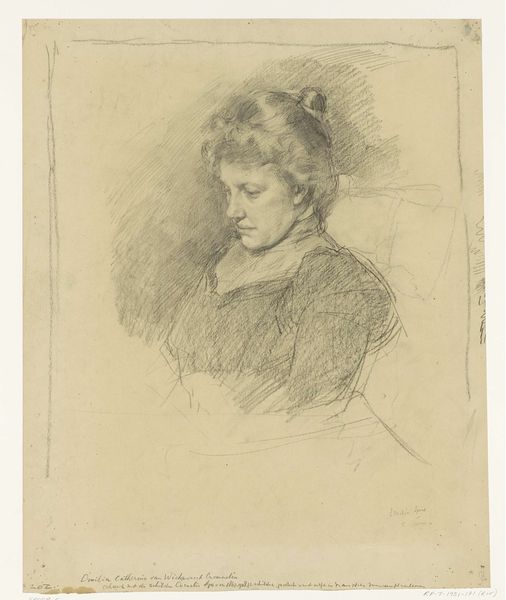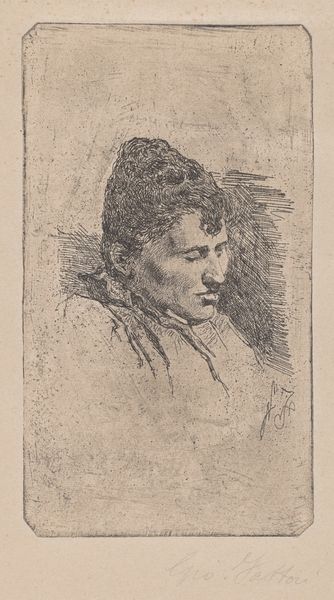
print, etching
#
portrait
# print
#
etching
#
realism
Dimensions: 160 mm (height) x 125 mm (width) (Plademål)
Curator: "Faster Cathrine" is an etching created in 1884 by Niels Skovgaard, currently held in the collection of the SMK, the National Gallery of Denmark. Editor: It strikes me immediately as somber, almost severe. The dark background contrasts with the lighter tones of the figure, creating a pronounced profile. Curator: Absolutely. The work portrays Cathrine, whose role as a domestic figure invites contemplation on 19th-century gender roles and expectations. The subdued tones could signify the restricted sphere of women's lives. What statements do you think Skovgaard is trying to express through his portrayal of Cathrine? Editor: Well, look at the details in the etching. Notice the use of light and shadow across her face; the cross-hatching technique gives a depth of emotion and almost reveals a story etched in time and emotion on her face. See also how it adds to the sense of volume and form. The stark lines forming the borders, combined with this interplay of shadow and volume makes it a powerful statement. Curator: I concur that the use of the etching technique contributes to the sense of history and permanence, inviting viewers to delve into the personal narratives embedded in societal context. Is Skovgaard then drawing attention to a silent resistance? Editor: Perhaps he's inviting a slower, more careful reading. His delicate manipulation of light guides the eye to appreciate each texture and gradient shift. Curator: Reflecting on Skovgaard's composition and your meticulous reading, the portrait of Cathrine indeed challenges us to consider her not just as an individual but as representative of wider struggles. Editor: And through the formal elements, the artist reveals the character of Cathrine—offering viewers a rich visual and emotional experience to be found within the simplicity of form.
Comments
No comments
Be the first to comment and join the conversation on the ultimate creative platform.


